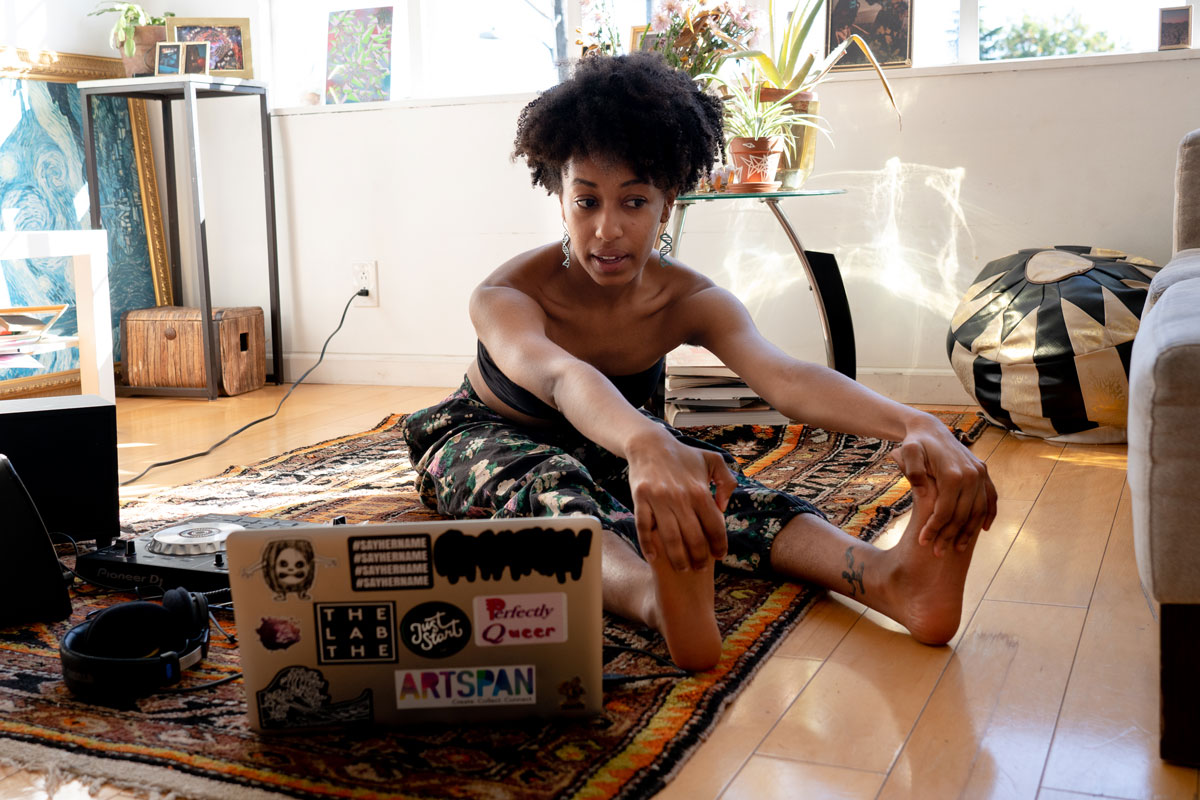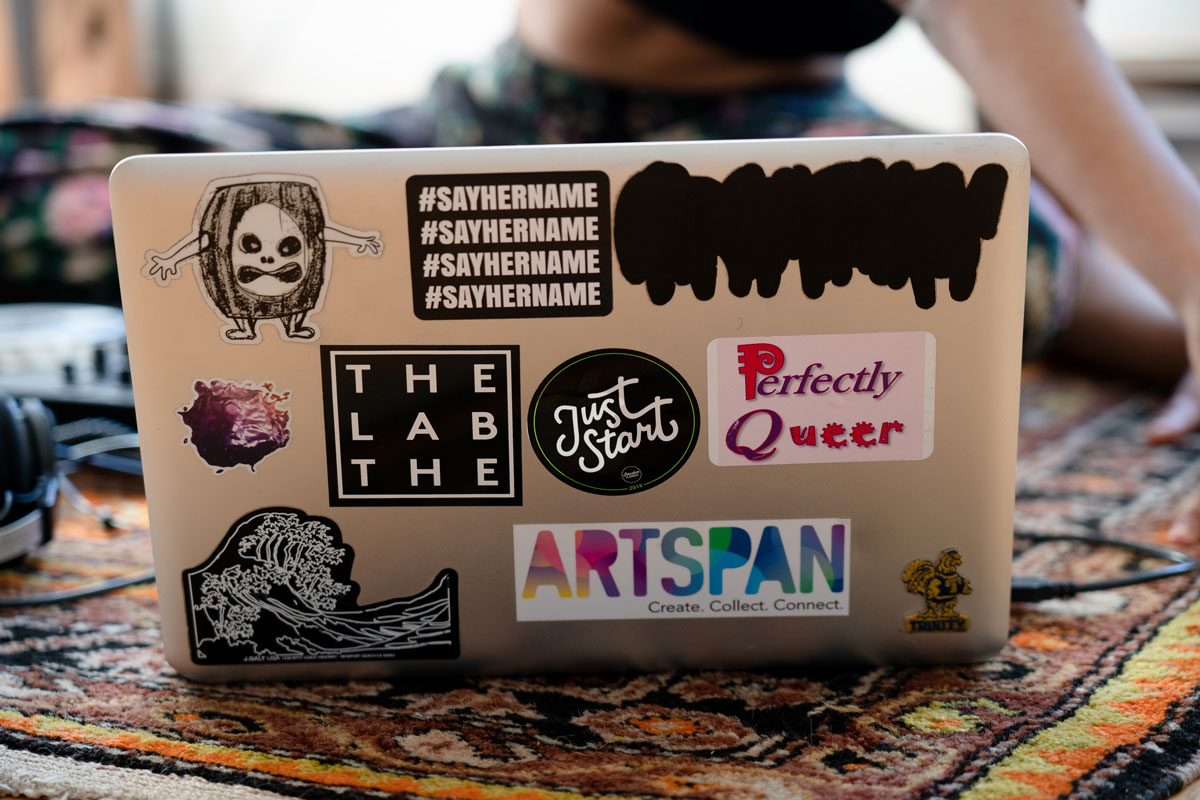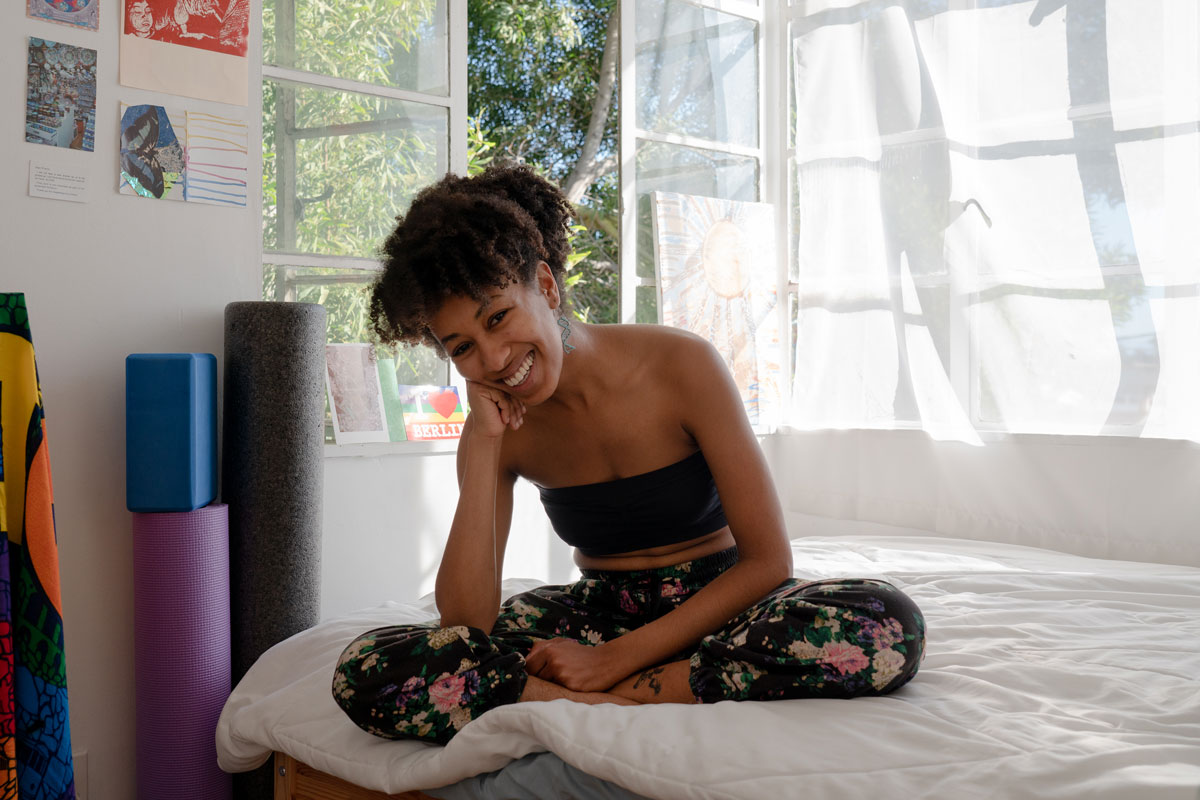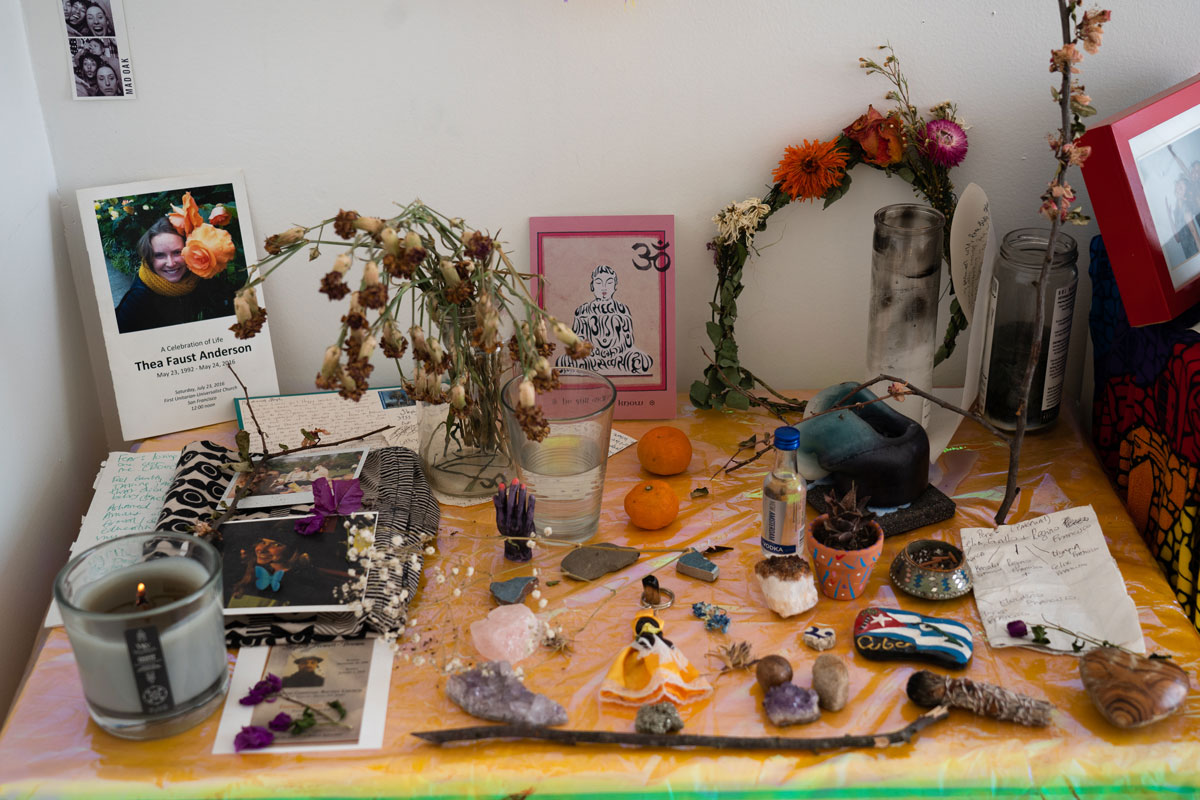Stephanie Hewett’s story is a classic Bay Area artist experience of constant hustles, side gigs, long rides on public transportation—and finally, her body telling her to slow down.
How Stephanie Hewett Found Her Financial Footing in the Bay Area Dance Scene
In order to shorten her commute from Oakland to the College of San Mateo, where Hewett worked in 2018 as adjunct faculty in the dance department, filling in for a teacher on parental leave, the performer and choreographer needed a car. But in order to buy a car, she needed to work seven days a week for six months to save up the money. And before she bought that car, she had to find the time to learn to drive.
Growing up in the Bronx, driving wasn’t a skill Hewett needed until she graduated from Mills with her MFA in dance and found herself teaching 40 miles away from her Oakland home.
So for three months after she started teaching, and before she bought her own wheels, Hewett commuted almost two hours each way, Monday through Friday, to San Mateo. “I would have to take a bus to the Coliseum BART, then BART to Hayward, then take a bus from Hayward to Foster City, and then take a bus from Foster City to San Mateo,” she says. “It was rough.”
Paying the price of not slowing down
For many recent graduates of an MFA program, landing a full-time (though temporary) gig teaching pilates, yoga and ballet at a Bay Area community college might sound like a dream fulfilled. But Hewett says the schedule—even after she cut her commute in half by driving—proved grueling.
Ultimately, what prevented Hewett from maintaining her untenable regimen of teaching, performing and commuting was her very own body. She sprained her ankle while performing at YBCA in June 2018, then continued to dance on it while rehearsing for a November performance in San Francisco’s City Hall, an event with Oakland artist Sofía Córdova.

By sheer luck, as Hewett was struggling to maintain her schedule while injured, the Mills dance department reached out offering her a full-time job as an administrative assistant. Even teaching five days a week, her adjunct position at College of San Mateo meant she didn’t have any health insurance. “I didn’t have security,” she says. “All my money was from teaching.”
Hewett accepted Mills’ offer. “I never imagined myself doing that,” she remembers, “but the timing was kind of perfect because I was hurting myself by not stopping and not slowing down.”
Finding support in the Bay Area dance scene
Now, Hewett makes about $33,000 a year at Mills—and has health insurance. In addition to that steady income, she brings in anywhere between $300 and $1,000 a month from her practice. This includes performing in collaboration with visual artists (like the City Hall event) or independently at events, and teaching workshops.
Most recently, Hewett has done audio describing work for audience members with visual impairments, through the dance company Jess Curtis/Gravity. Hewett describes actions, costumes, setting, gestures, facial expressions and objects into a muffled microphone for audience members wearing wireless headsets.
“This is something that not a lot of dance companies or performance and theater companies are doing,” Hewett says. “So Jess is really hoping that folks will take these services seriously and provide them for their audiences.”

In addition to her own practice, Hewett is part of the Bay Area collective Lxs Dxs (pronounced “lex dex”), a six-person group of emerging movement artists and choreographers (jose e abad, Gabriel Christian, Felix Sol Linck-Frenz, Hewett, Emelia Martínez Brumbaugh and randy reyes) who met during CounterPulse’s Performing Diaspora residency in December 2017.
“We all have our different practices that we bring together,” she says. “Some people are more interested in storytelling, some people are more interested in video work or ritual practice or drag.” The group has performed together several times since forming, thanks to residencies at Rancho 2y2 in Veracruz, Mexico, and at CSU San Marcos (the artists were able to pay for about half of their travel costs with money earned from past residencies and performances; the rest they paid out of pocket). Most recently, Lxs Dxs was invited to perform as part of CounterPulse’s May fundraising gala, receiving a $300 honorarium they split six ways.
Creating new work is only possible, Hewett notes, if Lxs Dxs can access free rehearsal space—as they did when preparing for CounterPulse’s gala. “It’s hard to meet weekly when we don’t have our own space,” she says. And at this point, it’s just not a financial possibility for the collaborative: “That would require us paying for space and then not being able to pay ourselves for the time.” Bay Area rehearsal spaces cost about $15 to $20 an hour.
The support of organizations like CounterPulse has been a major part of Hewett’s Bay Area career. In addition to collaborating with Reyes during his Performing Diaspora residency, Hewett was awarded the Edge residency, CounterPulse’s commissioning program for contemporary choreographers. That residency culminated in her production /soft/c/ in April 2019, for which Hewett received a $700 co-production grant from the dance company FACT/SF. Charles Slender-White, FACT/SF’s artistic director, later invited her to join his nascent fiscal sponsorship program.

With fiscal sponsorship, Hewett is eligible to apply for funds only available to nonprofits. In the future, if Hewett receives grants through FACT/SF, the organization will take five percent of all awarded money as an administrative fee. (Other local fiscal sponsorship programs, like Dancers’ Group and Intersection for the Arts, take ten percent.)
Hewett is one of just two initial recipients of FACT/SF’s fiscal sponsorship program. “I see her work as having a lot of promise,” says Slender-White of Hewett. “I think her voice and aesthetic in the region is unique and interesting. She also seems to approach craft with a level of rigor that I personally find very satisfying.”
Hewett says the financial realities of managing a dance company, getting fiscal sponsorship and making it all work in the Bay Area wasn’t the focus during her grad program at Mills: “You put a lot of money into it and you have all this space and time to experiment and decide what it is that you want to say and how to say it.” Which was great, Hewett says, but it means learning how to navigate the wider world of arts funding after grad school, through word of mouth and cohort networks.
Expanding her practice
Meanwhile, Hewett keeps her expenses fairly low. She has two roommates and pays $600 a month in rent. On top of that she spends $100 a month on car insurance and $250 a month on grad school loans. The only purchases she makes that could possibly be described as impulsive or extraneous are the props and materials she hoards for future projects.
Hewett says her relationship to money definitely impacts how often she produces shows and what kind of scale she’s able to attain in her work. “I can’t produce work all the time because I don’t have the resources to do that,” she says. “And I also refuse to have collaborators and not pay them. So most of the time I end up making a lot of solo work, which also requires money, but not as much money.”

With /soft/c/, for example, Hewett paid two dancers to perform, hired an artist to create live projections during the show and commissioned new work from a composer. CounterPulse provides $1,500 in artist fees and $1,000 in production fees to recipients of the Edge residency; Hewett ended up paying $2,000 out of pocket to her dancers and collaborators.
For now, producing one major piece a year is finally feasible for Hewett. She has a slate of residencies and performances scheduled through October, and her practice is changing. Because of her injury, she’s exploring other mediums. “I’ve been dabbling in music composition, video projection, storytelling with voice. I would say I’m very much multidisciplinary,” she sums up. She’s learning how to mix music and DJ—another expenditure she’s now saving up for.
So far, Hewett’s been able to stay in the Bay Area, provided with the opportunities and support she hoped to find after grad school. “I really enjoy it here, especially in Oakland,” she says. “I love the communities that I’ve created and that I’m in. As long as I can keep making money or keep being awarded these grants, and people can believe in my work and pay me to make the work, I think it can happen.”
“But if anything shifts,” she adds, “I’m open to leaving.”


